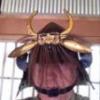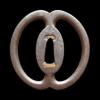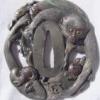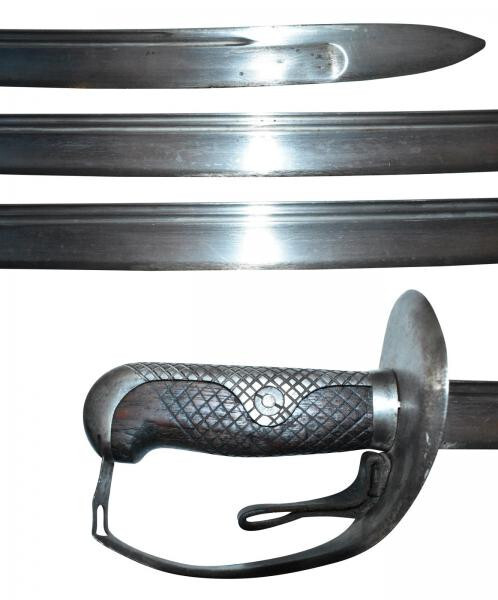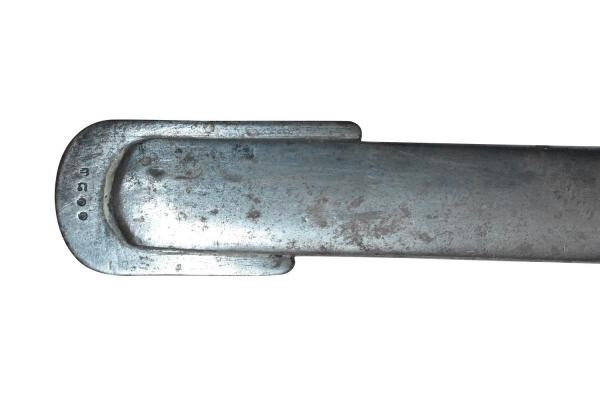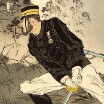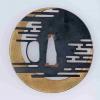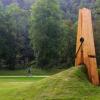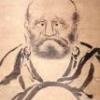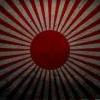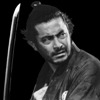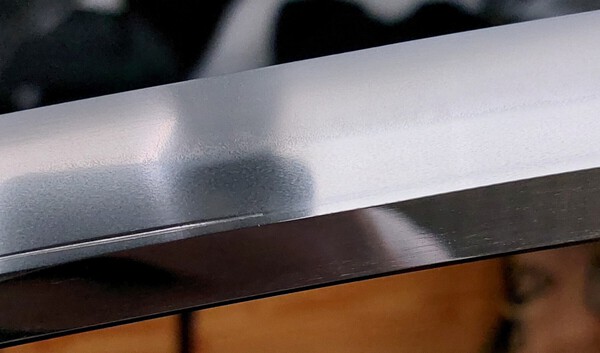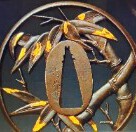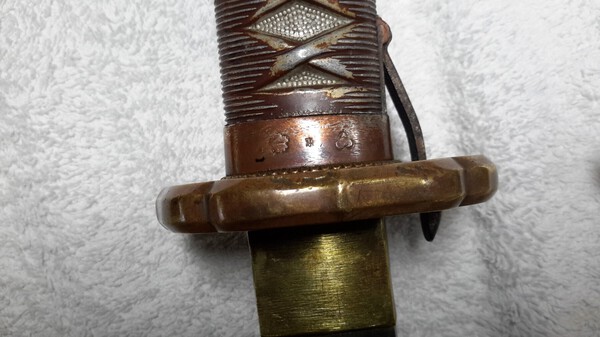Leaderboard
Popular Content
Showing content with the highest reputation on 01/11/2022 in all areas
-
Collectors have different tastes and desires, so one cannot group everyone in the same category: be focused or be broad. Often collectors start broad and eclectic and after, say, 10-15 years they decide to specialise. But they decide to do that because that specialism gratifies them and they have finally realised, after trying out different aspects, what really pleases them and evokes the emotional response that keeps them collecting. There are others who prefer to accumulate and every new acquisition causes the adrenaline and dopamine spikes that make people euphoric. To them it is not so much about what they buy, as long as it is likeable in the broadest sense of the word, but the identification, negotiation, acquisition, restoration (“the journey rather than the destination”) count at least as much. It is all very well to draw parallels with fine art or coins or stamps but this hobby is different. It has its own peculiarities even though I admit understanding collecting and human psychology evinced in all fields of collecting helps rationalise certain general behaviours. How the OP proceeds is up to them. But being educated about the hobby, what is out there (and where it is), the price levels and dynamics of the resale market afterwards and most importantly - about the swords themselves - is paramount. How their taste evolves afterwards is up to them.5 points
-
Hi Rob, I'm with you in that i thought for sure the sword i have was a post war 'bubba' job, now yours is the second one i have seen in all my collecting time. In Bruce's other thread i had mine also included in the photo, but merely wanted to show a range of scabbard colours i have seen and own. Having owned quite a few black scabbard nco's, i didn't see the big problem with them and had my doubts with all the negativity surrounding them. All references in English give just the basic Olive drab from factory description, nothing else, and yet clearly others do exist, even Nickel plated ones, but they are not mentioned either. When the IJA Camouflage Manual was discussed over at the WRF, it describes the 4 BASIC Colours used for camouflage purposes only. I looked into them from the Modellers veiwpoint ( they are meticulous on detail and historical accuracy) and made up the colour chart which i posted in Bruces thread. We all know that other colours were used, such as yellow, orange, red, the whites and blacks. The 'Red Bean' also gets a mention by Nick over at WRF, but all these are not the 4-Basic Camouflage colours, so make of that what you will. Anyway, to make a long story short, i began to look into the other colours and found a huge variety.... Early war, Late War, even the AIr Wing which was part of the IJA but the IJN had its own. There are LOTS of colours. When i made the comment i was referring to the colour itself, and i still stand by this comment. There were 4 different Naval arsenals that performed ship building and re-fitting of ships. Each of these had their own distinct colour version of greys, blues etc. There is a huge variation in the greys and what is a standard colour compared to a 'camouflage' colour is out of my scope for now as we would need IJN manuals to be able to go further. Here is a chart of the 4 colours used by the shipbuilding arsenals, although not shown, the first one has 4 variants, the second one 3, and the third one 2. Also a photo mix of my 'Grey' type 95. Before i forget, it's good that Thomas asked for your serial numbers, although your blade is Kobe (Ichi), the scabbard is from Iijima (by serial numbers) which is still a Tokyo Arsenal sub contractor. Mine is also an Iijima produced sword (matching numbers) and also Grey painted over the Olive Drab original paint. Just for interest i thought i'd share another recent find with you here. This time a Suya produced sword(again Tokyo Arsenal), but it has a Nickel plated Tsuba and 'Blue' scabbard. It appears to have been stripped prior to the blue being applied, however there are traces of brown under the scabbard throat. My understanding is that the IJN, didn't issue NCO's with swords, however, their Land Garrisons and NLF may have been different...they were essentially infantry under Naval Command. I have a Type 98 with black painted wooden scabbard and black suede combat cover in my collection, it came with a Sam Brown style belt aswell, all from a vet who acquired it in New Guinea from a NLF member. I remember reading that a lot of these were re-posted with IJA units towards the end of the war, but don't quote me just yet, as i need to find more references and could be wrong. Perhaps there could be a link here to explain some of these strange scabbard colours we have. Otherwise, it's all just Post War 'Bubba' activity at it's best.5 points
-
Well, be careful. Not all is chikei. Some is merely laminations ie mokume or itame. The chikei would be accumulations of nie mostly and be dark but shiny5 points
-
鍋島公拝領薙刀銘肥前国住近江大掾忠廣 – A naginata signed Hizen no kuni ju Omi-daijo Tadahiro, which was received from the Load Nabeshima 秀嶋家 – Hideshima family 元白鞘書有 – The writing was on the previous shirasaya.4 points
-
These type 94 gunto were only carried by higher ranking officers. They were not carried by lower rank officers. I once bought a very nice Sokan Tanto with horimono from a vet. He had befriended a family and gave them a sack of rice. The tanto was a gesture of their appreciation. No doubt it was their family treasure. Another story, several years ago I found an ubu tachi by Gojo Kuninaga that ended up going tokuju. The story with that one was the guy who brought it back as a souvenir was a member of MacArthur staff. I have no reason to doubt the story of the Vet or the story that the Gojo came from the estate of someone on Gen MacArthur's staff. Those guys all got great swords to take home because they had Japanese liaison's. Anyway here are a few more photos. Hard to read but might be Sukemitsu.4 points
-
4 points
-
Hi guys, I haven't posted here for a while; thought I should stir the pot. I just listed a lovely signed and papered katana with itomaki no dachi koshirae: all of it in excellent condition. https://www.japaneseswordbooksandtsuba.com/store/swords/q642-signed-papered-katana-itomaki-no-dachi-koshirae I know there have been newer collectors here on NMB asking about possible purchases. They could do a whole lot worse than this one. And as long as I'm tooting my horn, I don't understand why I still own this Hojoji Kunimasa katana: https://www.japaneseswordbooksandtsuba.com/store/swords/q404-long-katana-hojoji-kunimasa Give it a look. Cheers, Grey3 points
-
Mid-January update. On Thursday I’ll probably let go of the latest handachi Koshiraé without creating a new tsunagi for it. Someone else can make that commitment. Bought on impulse. Straight back into the pot. The gold Kiri Mon on Nanako Shakudo Fuchi/Kashira are good quality, so I am sure it will find a new owner. The Kagami-Shi Tsuba is par for the course. The cheering news is that having recently bought a mumei Muromachi/Momoyama(?) Jumyō Tantō in Yamanouchi Mon, (see a few posts above), I’ve coincidentally found a Tosa Yamanouchi gun to go with it. Sitting in traffic today, I was thinking that now I have at least one object from the Hosokawa family of Kumamoto, the Daté families of Uwajima and Sendai, the Ikeda of Tottori and Okayama, Hachisuka of Awa/Tokushima, Toyotomi Hideyoshi, Tokugawa, and the Yamanouchi of Tosa, inter alia. Each is an express elevator back in time. Close your eyes and you’re there.3 points
-
Hi Bill, all officer ranks carried the Type 94 until the introduction of the Type 98. Though by 1945 it's likely the officers who survived since the 1930's and still carried a Type 94 would be a high rank by that point. There were also plenty of Generals that retired before & during WWII, leaving great condition Type 94 like yours intact.3 points
-
The writing on the right means a place name. 館林住 - Tatebayashi ju 正良 - Masayoshi3 points
-
This Kaneyasu (Hidari Mutsu). This smith is known for writing backwards, as yours is. Not confirming it is a real Hidari Mutsu, just that it is at minimum purporting to be so.3 points
-
2 points
-
I recently came across Stegel's @Stegel pictures of the colour variations on Type 95 sayas (see first picture). As I recall, the one on the extreme right, was believed to be a IJN 'repaint' or origjnal grey paint? I have a similar Type 95 that I thought had been given a 'bubba' job (that word still cracks me up Bruce 😊) but after seeing Stegel's great post & pics I am hoping mine is a 'naval respray'. You can still see some remnants of original olive drab. The colour of mine is exactly the same grey/with just smidgen of green, as that shown in Stegel's, picture. Unfortunately, my pictures may not reproduce it's actual colour. So my questions are, how common are these 'naval' Type 95 grey coloured sayas? I just havent seen any. Is there a back story on them and did every IJN rating have one? Thanks Rob2 points
-
Hi Matt, I think Hiromitsu for the signature and February in the 20th year of Showa for the date, so Feb 1945.2 points
-
Thanks all for the comments....much appreciated. If I have understood the replies: The star stamp only appears on RJT blades - this is as we RJT collectors knew. No example of a showa era Kaneyoshi blade is known. I am prepared to stick my neck out here (not having Matt's sword in hand) and say that this blade does not seem showa era to me. I FEEL this blade is an old shinto/shinshinto blade - possibly the 1780-1804 late Shinto - early Shinshinto Kaneyoshi smith listed by Stephen. I think it is the first non-WWII blade I have seen in RS mounts. I say this as: (1) the blade is virtually straight. (2) the tang is short and stubby, with 1 hole (3) the tang is undated (4) while the tang edges - yasuri, mei and mekugi ana are fairly 'crisp' I do not think WWII era crisp...more 1780s era crisp (IMHO). IMHO this is just not the sort of gendaito or showato blade usually seen in RS mounts...have a look at the pics...I'd like to hear members' opinions - maybe some more examples? and if I am wrong I would like to know. Regards to all...2 points
-
We cannot discount it entirely, but there is zero current evidence, so balance of probably. I work primarily with the intention of taking an evidence based approach and noting speculationwhen that is what it is. I enjoy speculation, but it should always be noted as such. At this stage (not discounting the possibility of future discoveries (which to go off on a tangent we find more about 95s every year despite pessimistic views there is 'nothing new to learn')) we can say there is no evidence at all of Type 95 saya being painted grey as any kind of army, navy or arsenal practice. I think I have made my general thoughts and observations clear earlier regarding the myriad of different saya colours we typically encounter and how much evidence (and what type) exists to corroborate our current speculation. It's absolutely an interesting topic I'd like to discuss further, but with a critical mind and an openness to accept that sometimes it really is just a 'Bubba' job or something done by a veteran/owner/merchant past or present, for reasons known only to them.2 points
-
Wow. Beautiful find! This is one I would be sending to @Ford Hallam, personally. It's really stunning. You can even imagine the harsh wind blowing.2 points
-
Great find Bill !! Personally i believe the story, as i remember my Mother telling me how BAD it was straight after the war, shortages were peaking in almost everything till after the clean up and economy rising again. The 10lbs of sugar would have been worth a small fortune at the time, it would get you other things in a barter deal and keep your family from starvation.... worth more than a sword which won't feed your famiy and would end up being confiscated eventually, leaving you with nothing! Just my opinion. I'm with Steve and Marco, please show us more of the blade and smith details. I have a Generals sword also, but it was surrendered in Malaya, and the British were a bit more exact in highlighting these things especially from surrender ceremonies. here's the plaque on mine. The blade is an old Shinto mumei, but i have the note the general left with it. Steve, i love reading your comments, great work!! sometimes they really make my day!2 points
-
I never understood why a recommendation to be a topical collector, i.e. having a very limited collection dedicated to a very narrow and precise topic, is something commonly repeated in nihonto. There are very few such collectors in nihonto. People who give this advice... they are topical collectors? Hm... Was Compton a topical collector? Or probably the most important Western collector - Bigelow? No. Neither was Festing nor dozens of lesser known collectors. There are subjects like coins or military decorations, where most successful collectors are topical. They collect Roman Empire between this and that, or specific Greek colonies or else. Its natural for them to have narrow specialization because otherwise there is not much point in collecting these items. You simply can't collect just "coins" with any measure of success. In nihonto if one sees A+ sword for little money, one buys it and keeps it in the collection. Therefore - almost complete absence of topical guys. People have preferences but almost no one is hard limited to a specific topic and die hard motivated to extend his collection in this specific topic only. Exceptions are a few gentlemen at Very high level who basically allocate $ and buy consistently say all Ichimonji blades on sale above certain level, and do it for Y years. To give advice "be like them" to a beginner is a stretch at best.2 points
-
Further to this, I have been studying Torigoye hakogaki for the past couple of weeks, and I discovered that Torigoye for pieces he rated highly, he signed with one stroke to the right of his kao. For pieces he though were not of the highest caliber, he signed with two strokes to the right of his kao. This piece has a kao with one stroke, which means he must have though very highly of it. I also note for future reference, for some reason he writes zōgan as 象眼 (instead of the more orthodox 象嵌). If anyone has any boxes with Torigoye hakogaki on them, I'm keen to take a look if they haven't yet appeared here on NMB.2 points
-
For Hidari Mutsu Kaneyasu it was, yes. https://www.aoijapan.net/katana-mutsu-kami-kaneyasu-hidari-mutsu/2 points
-
I feel like we have some firm believers of "Its easier to ask for forgiveness than permission" here.2 points
-
HI Khalid, I have a few thoughts on this below and a great article from Guido Schiller.2 points
-
Hi my dear friends, First of all, I want to express my most sincere wishes and a Happy New Year to you all and your families. I know this should be in another section so Brian, please feel free to move it if you feel like it, but I posted it here because some members have contacted me and I want to reach most of them. Not sure they all go to the Izakaya. Then I guess I owe you guys an explanation and an apology for my silence those past few months. I’ve wanted to do that for quite some time but it isn’t always easy to expose your issues in front of everyone, and I know some of you may find those issues triffle or first world problems. Anyway, here’s what has happened to me since my absence. First of all, let me tell you that I’m an animal lover… maybe a little too much ! For years, I have been doing the job of a shelter for distressed cats without help or financing. At some point, I had more than 30 cats. Costly and tiring. That’s roughly three hours of work in addition to my full time job everyday. Those animals I recover are usually starving, some of them sick, all of them scared by very difficult beginnings. I’m used to have animals that don’t live long because of that. I loose some every year. Everytime, its a tragedy for me but I’ve developped some endurance to it. This year was special. I lost ten of them in a row over the space of two months. Causes of death were different but I think that the last straw was probably the last one who was litteraly and voluntarily crushed to pulp by a car and the driver purposefully drove over him with both wheels. I know it as I saw it happen. I guess it taxed me a lot and I entered some kind of a breakdown. I was starting to recover, in September, when the secong blow came. Now, here’s the second part of my life. Ten years ago, my elderly mother suffered a stroke that left her with paralysis on her left side. My father had a hard life working in construction and carrying loads so his back is ruined and he has to use a walker. Being an only child, I took them both in and care for them. Not a light job either, but one I feel I have a duty to accomplish. So, come September, my father has to be hospitalized because he had fallen in the middle of the night. His blood count was well below normal. Diagnosis : Mielodisplastic syndrome. To sum up, a bone marrow cancer that will turn into fatal leukemla in generally something like two years. That was the fatal and final blow to me. Now it’s been three months since that diagnosis and I am starting to digest it and recover. My father is responding to treatment and so far, he is neither better nor worse. There you have it ! All tis has made me depressed and apathetic, with no real interest for anything and some sort of self pitying. So I am sorry and apologize to all those who’ve contacted me and to whom I haven’t replied, I will reply to each and everyone of you. Please just give me some time as things have accumulated and I have some catching up to do. Know that I am feeling better and will do my best to stay around. Best wishes to you all, JP1 point
-
Hi everyone, I'm thinking about staring my own personal collection of Japanese blades. Any pointers as to how to go about it? I go to shows and get to see private collections every now and then. I'd like to collect examples that are worth holding on to regardless of condition, as long as there have no fatal flaws. The collectors I know on Cape Cod have very deep pockets. They just buy and never sell which doesn't work for me as I don't have a blank budget. Any tips and/or tricks would be helpful. I'm new here and frankly don't know much. I do know that authentic shinsha origami are a plus to have. Best, Khalid1 point
-
I thought I would share this legitimate Generals sword with the board. It came from the Son of an army vet who was a part of the early occupation. The son told me his father traded an elderly Japanese general a 10 lbs sack of sugar for it. He didn't know the tassel denoted the rank until I told him. Enjoy! Bill Rannow Mpls, MN1 point
-
1 point
-
That is a MASSIVE auction! 5700 lots. Some of the guns and knives... Hey...I've got one of these! https://kraftauctions.hibid.com/lot/108924228/meiji-era-gassan-sadakazu-samurai-katana-sword/?cat=3183&cpage=35&q=&ref=catalog I think someone was churning them out during wartime or just after. Anyways, there is some nice stuff there. https://kraftauctions.hibid.com/catalog/268201/45th-anniversary-antique-and-collectible-auction---weekend--1/1 point
-
1 point
-
I'd spend the money on the best restoration possible instead of papers. In my opinion (for whatever that is worth...), it doesn't need papers, he's not one of the top names and the good quality of the work speaks for itself.1 point
-
1 point
-
1 point
-
Think most were stored in wet basement. Some serious restoration projects there but bids are real low so hope some are saved.1 point
-
Yes, one of mine has repairs to the pan in silver. It seems to be resistant to the corrosion caused by black powder flash. More often you will see rebuilt pans in iron, or using shinchū brass though. The tighter the vent hole, the better the main blast, so heavily used guns needed this operation, called ‘Buku-naoshi’.1 point
-
It's a difficult subject to be involved with, and yet the difficulty makes it all the more appealing for those of us who like the detective challenge! It's important, like Steve said, to constantly remind ourselves about the facts, and use cautious language when hypothesizing. I'm quite guilty of full-blown speculation all the time. Yet, even our speculation, business models like to call it brain-storming, can push others to challenge or confirm the ideas and dig for more facts. So, keep it going boys! Ernie's ideas about the similarities of some of these greys and blues to naval colors is interesting. The observation is simply a factual observation, and opens up a new direction for investigation. I've had the blue one in hand, and can say that it has all the look and feel of a war-period paint job. Having seen this, it really supports the nihonto guys' constant warnings that there is no better way to analyze a blade than having it in hand! The age was clear in every aspect, down to grit and built-up grime in every crack and crevasse. It also struck me as incomprehensible that someone would take the time and effort to "spruce up" an old gunto with nickel plating and a saya re-paint, and then .. what? .... beat it up, scrape it up, throw it around, etc, to make all the wear and tear marks this one has. Sure, if a guy was intending to do a re-paint, but wanted it to look used in the war, he could go to those efforts. But this one doesn't look that way. The paint is old, the wear and tear look old, the grit and grime look old - it looks like something out of WWII. Observation is part of the evidential pile that we build in examining a question. Yes, it is opinion, but that's what we bring our old nihonto to the experts for - their observational opinion. Not proof, but weighted evidence to be added to the scale.1 point
-
Thank you very much John. I am assuming this isn't the original shirasaya but rather a recap of an old sayagaki? I can imagine that "bestowed by an official of the nabeshima" is possibly true. The saya is decorated with a variation of the nabeshima kamon (myoga ( maybe the mentioned hideshima variant?)) For sure is that hizen was the place of action. Definitely had to be some time after the shimabara rebellion, since tadahiro received the omi daijo title in 1641. Will do further researching into the nabeshima clan. Best regards1 point
-
Hi Dominic, Maybe: “bestowed by an official of the Nabeshima” then naginata etc. Then in the next photo “writing from (written on) original shirasaya.1 point
-
Once again Mr. Singer you reputation proceeds you. Thanks so much. Now I know why it's so pricey lol Clean blade though.1 point
-
1 point
-
My transcription and translation of the sword markings are below. The abbreviation R.S. stand for the Rattanakosin Era. รัตนโกสินทรศก (ร.ศ.) = Rattanakosin Sok (R.S.) = Rattanakosin Era. Thai solar calendar Year adopted or made: ร.ศ.๑๒๕. = R.S. 125 = 1906. Blade serial number: ๔๗๙ = 479. Blade edge markings: M. Neumann, Hoflieferant Berlin.1 point
-
1 point
-
Yes, only on RJT blades and on some it will be the only marking while on others there will be additional inspection marks. I think there was some flux over time on how they went about the markings and then when you factor in the different arsenals involved and how they went about it. I have not seen one via photographs and then again I have never disassembled one either. It is atypical to break down a NCO for inspection. With that said, I have seen over a dozen via illustrations and none have had a star stamp. However, I will call in the cavalry just in case I am wrong! @Shamsy & @Stegel Stepping outside of my comfort zone but the tang does have a layer of oxidization that can be seen on the 松 closeups. The initial pictures seemed to show a newly made blade but the closeups clearly showed the oxidization. Is this layer what one would expect on an older blade? Is it possible to match up the 兼賀 inscription with a known Kaneyoshi to narrow down which one used this variation and compare blade shapes? Some days ago I located a couple but there was no match as to the style of inscription. Until then, I am taking the better part valor and sitting on the fence! As the old saying goes, when you find yourself in a hole, stop digging!1 point
-
It is a 24th series and the 8th one reported to date. The observed 24th series range from ウ-20 to ウ-593. In addition, it is an army contract blade prior to the change in markings to 満鐵鍛造之. Above the 昭和壬午春 date, one can see the "M" partial inspection mark. One will also more than likely find a 東 stamped on the kabutogane.1 point
-
That's quite an interesting piece, Thomas. The serial number makes the blade originally a copper-handled 95, but it appears to have been re-fitted with aluminum handle and corresponding saya. To the paint, there is the grey undercoat, but in the first pic you see a red bean or brown original coat, then the black over-paint. All, including the grey tsuka paint looks old, war-period.1 point
-
1 point
-
NCO swords are not my thing, but I remember seeing 2 way back in the early/mid 1980s and both, owned by different returned soldiers, had gold painted scabbards - can't remember now if they had brass or flat steel tsuba. I just though these guys had painted them to hang them over the fireplace, but based on this info above it looks like they both may have come back from the SW Pacific already painted. Makes one think....might be a reason for it. Hope this helps....1 point
-
In regards to the oval stamp on the Shigemitsu blade, I have found another blade that seems to have this as part of the inscription. Now I am wondering what this is all about. signature on broken sword Plus another oval stamp that is duplicated below via @george trotter. Naval sword translation Smith Mei1 point
-
Hi Bruce, thanks for putting this together. I does look to me that this is a Matsu stamp....a mountings shop ID stamp? from that area. I think, from the photos supplied by Matt that this blade has: 1. no star stamp 2. no date 3. one hole 4. is in RS mounts. I think this info and the photos themselves seem to show this is not a war-time made blade, but a pretty straight bladed, short tanged, probably Mino Province shinshinto blade with some age on the tang that has been mounted in RS mounts in WWII. The mounting shop did this private order job and put their shop stamp on the tang. The blade shape etc, and tang file marks, shape and nakago jiri looks to me to likely be one of the Mino Kaneyoshi smiths, possibly of 1781 see Hawley Revised 1981 KAN 3093 p.244. None of my books have an oshi of these smiths or I would post it. (If I am correct) this is probably the first non-gendaito/showato blade we have seen in these mounts. I always thought it likely that one would show up one day....this is it? I'd be interested in members thoughts....don't be shy, if I am wrong, just say so... Regards,1 point
-
Ken, thanks. The quick answer is yes, I try to keep active and do the rounds looking for bargains! Each situation is different, though, and often there is an element of risk. I found two very nice tsuba just recently, for example, and a battered but lovely Daimyo cabinet. To feed the habit I need to off-load stuff too. On the other hand I struck out badly with a koshirae that was not what it looked like from a distance. It was pulled out like a rabbit from a hat, Da-daaaa!!!! and I jumped at it. Well, it did have some redeeming features, but not enough to brag about here! I like to try and improve the things I buy, even marginally, such as by replacing the unsightly four-inch stub of a tsunagi with a decent full-sized replacement, but is it always worth spending such money on? Another mixed bag it was...1 point
This leaderboard is set to Johannesburg/GMT+02:00



